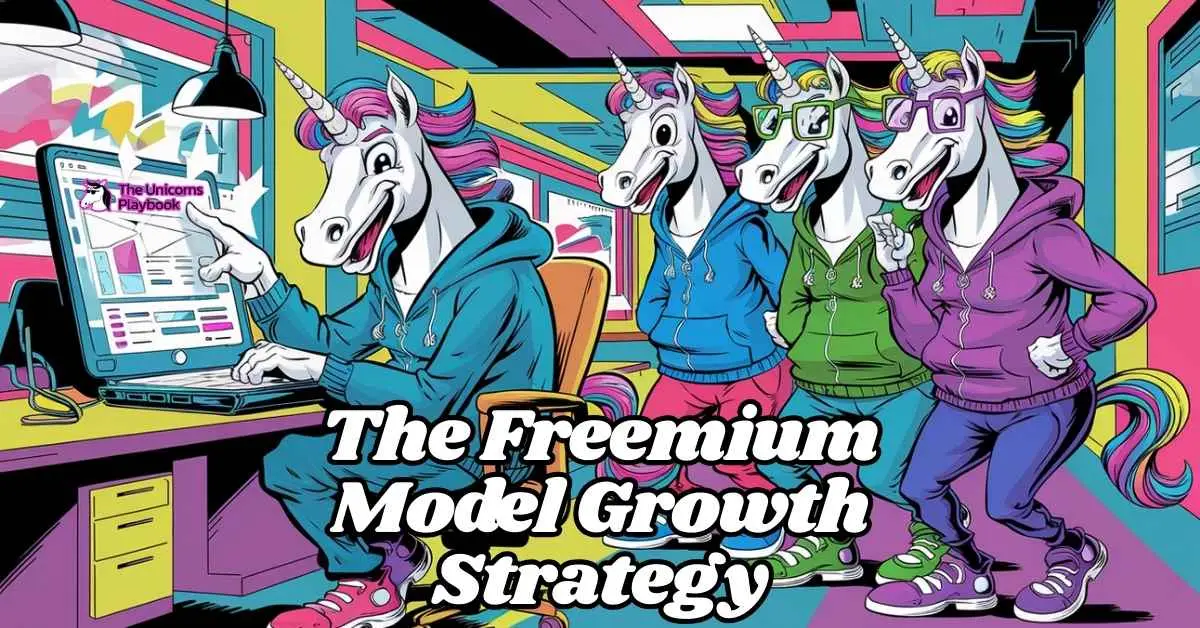
Still spending your ad budget chasing paid signups and cold outreach?
What if I told you there’s a proven better way to grow – one that turns free users into revenue machines?
Enter the freemium model.
This isn’t just a pricing model – it’s a growth engine that turns free users into revenue at scale.
Want to see how startups are hitting $10M ARR with zero ad spend?
Let’s examine how to master the freemium growth strategy.
🧠 What is the Freemium Growth Strategy?

The freemium model is a data-driven conversion funnel that SaaS companies use to turn free users into revenue engines.
Think of it like a self-sustaining growth system that strategically showcases your product’s core value while creating natural paths to paid upgrades.
And when done right, each free user becomes part of your distribution network.
Each free user becomes part of your distribution network because they experience and share real value before any payment is required.
As they integrate the product into their workflow and share it with teams, they naturally pull in more users.
This creates organic growth through actual product value, not marketing promises.
The best part?
Unlike paid acquisition where you’re constantly burning cash, freemium creates a perpetual growth machine where users drive growth for you.
Simple, scalable, and scientifically designed to convert.
💼 Why it works?

The freemium model works because it aligns perfectly with how modern buyers make decisions.
Gone are the days when buyers would purchase software based on sales demos and feature lists.
Today’s users expect to experience value before they pay.
When users get hands-on time with your product, something powerful happens:
They develop habits, discover use cases, and bring in their teams.
This creates a natural path to expansion that no sales pitch can match.
Enterprise deals with existing free usage close faster and retains longer than cold outbound sales.
But here’s what makes it so powerful:
Freemium isn’t just about converting free users to paid – it’s about building a self-sustaining growth engine.
Free users naturally spread your product through their organizations, providing real usage data that shapes development and building network effects that increase value for everyone.
In today’s competitive SaaS landscape, where traditional marketing channels are saturated, letting users experience value before payment isn’t just an option – it’s becoming the winning strategy.
💡 How Miro & Loom Mastered Freemium Growth
🚀 Miro (0 to 45M users)

When Miro launched its freemium model, they made a key strategic decision:
Give users 3 free boards with full features rather than limiting functionality.
This let users fully experience the product’s collaboration features while creating a natural upgrade trigger when teams needed more workspace.
The free boards became viral marketing tools – each shared board brought in 3-4 new users on average.
This bottoms-up growth engine took them from unknown player to category leader in visual collaboration.
🌱 Loom (0 to 21M Users)

Rather than copy Zoom’s enterprise-first approach, Loom took a different path with freemium.
They focused on individual users first, letting anyone record and share quick videos for free.
They added smart limits: 5-minute recordings and 25 videos per person.
When users hit these limits, they’d already experienced the core value and built sharing habits that fueled explosive team-by-team growth.
💡 How to use it in your biz

Step 1: Design Your Value Journey
Map your core product value and identify key features users must experience.
Design clear activation points that showcase “aha moments” and create natural paths to team expansion.
Step 2: Engineer Smart Limits
Set usage-based limits that scale with value received.
Focus on metrics like storage space or team members while keeping core functionality accessible.
Create upgrade triggers tied to team growth.
Step 3: Build Growth Loops
Design sharing mechanics that feel natural to your product.
Focus on team collaboration flows and viral features that drive organic growth.
Add limits that make upgrades feel inevitable, not forced.
Step 4: Measure What Matters
Track activation and rate over raw signups and monitor how teams expand through your product.
Focus on time-to-value for free users and optimize your viral acquisition channels.
♻️ The Freemium Growth Loop Explained
Here’s how a self-sustaining freemium engine works:
- Input: Free users experience core product value without friction
- Activation: Teams build habits and spread usage across their organization
- Action: Natural limits trigger upgrades when value is already proven
- Output: More free users join
And the cycle continues:
More free users = more teams experiencing value = more organic upgrades = wider product adoption = even more free users.
Each turn of the loop strengthens your product’s network effects while keeping acquisition costs low.
Ready to turn your product into a growth engine?
Remember:
The best freemium strategies focus on value first, monetization second.
Don’t limit what makes your product special.
Found value in this deep-dive on freemium?
Share it with other founders who are ready to build sustainable growth engines.
Sometimes, the best way to grow isn’t through more ads – it’s through letting users experience your magic first.
Hit that share button! 🚀


Leave a Reply